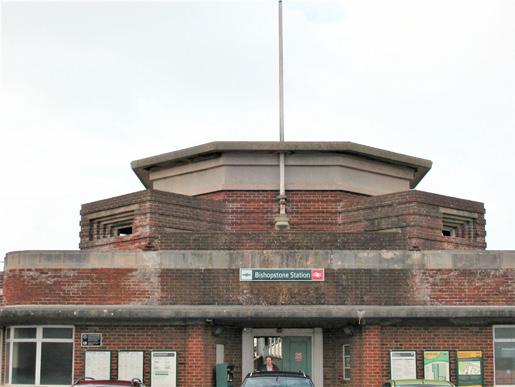
2 minute read
If We Had to Fight Them on the Beaches
If we had to fight th em on th e beach es
Our region is famous for historical invasions which are also tourist and re-enactor attractions (photo below). Thus the road signs to Hastings announce that you are in 1066 country, the year of the Norman invasion. Historians keenly debate if the Roman invasion in 43AD came via Sussex, e.g. Fishbourne, rather than Kent. Seaford’s Martello Tower and Fort Newhaven date from nineteenth century invasions that never happened – and are visitor attractions nevertheless.
Advertisement

Eighty years ago this month, we were due for another invasion which is not on local road signs. Operation Sealion (or just S Day) was penciled in for the 21st September by the evening of which Bishopstone and Seaford were to be occupied by the Ninth Army sailing across the Channel from Le Havre. The village of Tide Mills was already evacuated, for good. At nearby Bishopstone, the new Art Deco station had brick pillboxes added on the roof, making it look Art Guerra (photo right). The forlorn hut in Newlands Field is a memorial to Sea Flame which inspired public confidence (photo left). Even makers’ marks were blanked out on cartridge cases for security (photo top).
Silent memorials to Sealion survive in Seaford too. The most durable are the anti-tank concrete cylinders, like the dented one lying discarded on its side at the Buckle Car Park (photo below). A line of cylinders still guards the station car park, while others have been painted into seafront
garden walls. More ominous is the occasional beach mine, like this inert one found in 2011 (photo below with size 10 welly for scale). Visitors to
Cuckmere Haven can view more obstacles to delay invaders. One concrete ‘tooth’ with contemporary graffiti exposed by the tide is inscribed upside down, as if meant to be read from above (photo right). Unlike earlier invasions, Sealion was expected to come by air as well as by sea. A balloon invasion was mooted when the Martello was built. This time, the threat was piston-powered, and an epic air engagement climaxed in the sky that summer as people below endeavoured to go about their work in towns and fields. Amazingly, a ’40s piece of plastic debris from one of our aeroplanes, brought up by Storm Jorge on the beach in March, still preserves its Air Ministry logo (photo left). Thanks in part to a strategic error, Sealion was postponed on S -4 day, although remained on the backburner for some time after. There are still stories to be told of those days, like what did the secret resistance at Bishopstone get up to in Badger 1? Let’s safely enjoy dramatized history, but especially if some of it never happened in the end. Ed and Biddy Jarzembowski









